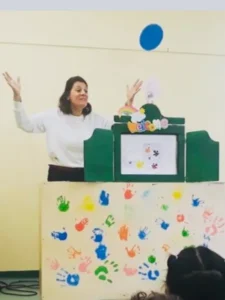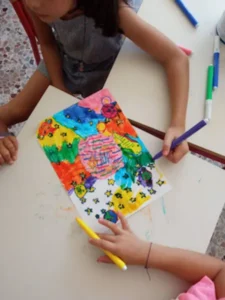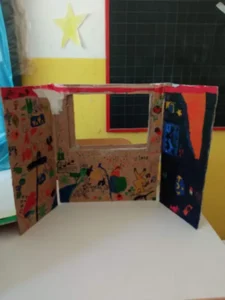Kamishibai workshops
At first there was a blank sheet…
“Kamishibai is an original and effective tool for reading animation, it is an image theater of Japanese origin used by storytellers. A wooden briefcase in which printed boards are inserted in front and back: on one side the drawing and on the other the text. The viewer sees the image as the narrator reads the story. The Kamishibai invites to tell and do theater, at school, in the library, in the playroom, at home”.
Just stick a wooden tablet in the crack and the story comes to life through the reading of a story that invites you to travel with words, to fly with imagination, to listen and imagine being guided by the perception of wonder. In the twelfth century it was the Japanese monks who used kamishibai, the paper drama, an instrument of interaction, communication and dialogue with the public, used to literate the most destitute families.
It is an effective tool that combines teaching and creativity.
This theater will “capture” the smallest on a par with or more of the classic games as in addition to listening to the stories will also have the opportunity to invent them, make the drawings that accompany the unfolding of events and even become storytellers.
Typologies
Below you can find three different types of activities that I conduct with kamishibai. Each workshop is a unique and unrepeatable experience, the development of which depends on the participants, their age, the context in which it is proposed and the multiple variables that can decide the level of involvement of the children.
I tell a story with kamishibai; it is an introductory meeting whose purpose is to allow children to know and become familiar with this type of representation.
I introduce a story without the ending and the children invent, illustrate and tell the ending they found.
We will build a cardboard kamishibai. The latter suits interestingly to include parents.
Each laboratory is adaptable according to the number of participants, their age and the context in which it is proposed.


